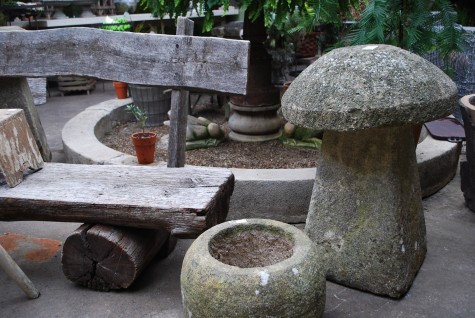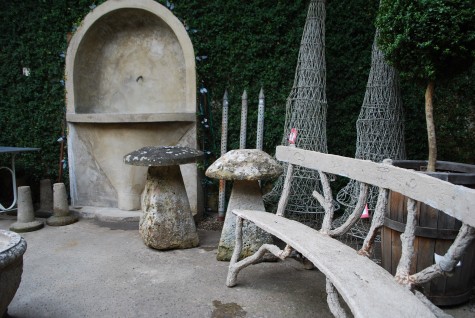 A customer in the shop yesterday remarked that the beauty of a winter or holiday container begins and ends with gorgeous fresh cut branches. I am inclined to agree. Our first delivery of fresh cut branches arrived just in time for our winter open house weekend. The tall sized second year red twig dogwood that came in has plenty of lateral branching, and astonishing height. It is clear our grower had plenty of rain this season. All of our branches are farm grown, and harvested when they are at their peak of size and color. Graded by height, they are tied off in bunches of 10 stems each. Every brightly colored and glossy surfaced branch bunch is our call to set up and begin constructing centerpieces for our winter pots.
A customer in the shop yesterday remarked that the beauty of a winter or holiday container begins and ends with gorgeous fresh cut branches. I am inclined to agree. Our first delivery of fresh cut branches arrived just in time for our winter open house weekend. The tall sized second year red twig dogwood that came in has plenty of lateral branching, and astonishing height. It is clear our grower had plenty of rain this season. All of our branches are farm grown, and harvested when they are at their peak of size and color. Graded by height, they are tied off in bunches of 10 stems each. Every brightly colored and glossy surfaced branch bunch is our call to set up and begin constructing centerpieces for our winter pots.
Do all of our winter and holiday pots have a tall branchy element we would call a centerpiece? No. But there are plenty of reasons that a tall twiggy element makes visual sense in a container. Shrubs are readily identifiable in the landscape. Post the fall leaf drop, they are a tall and multi-branched presence in the winter landscape. A branch centerpiece repeats that shape and texture. Many of our tall branches have astonishing color. Red, cardinal, black and yellow twig dogwood, and flame and curly copper willow endow containers with a strong dose of vibrant and natural color. A vertical centerpiece is a pleasing contrast to the lower and more horizontal elements. A robust centerpiece can provide great scale and proper proportion to the container to be filled. Some height in a container can provide plenty of visual action at eye level, or from a distance. Last, but certainly not least, my zone is very hard on live plants in containers. Few can survive our harsh winters with their roots in a contained area above ground. The cut branches are especially welcome in containers on properties too small to grow large shrubs specifically for winter color. They are equally welcome in commercial settings where the landscape is sparse.
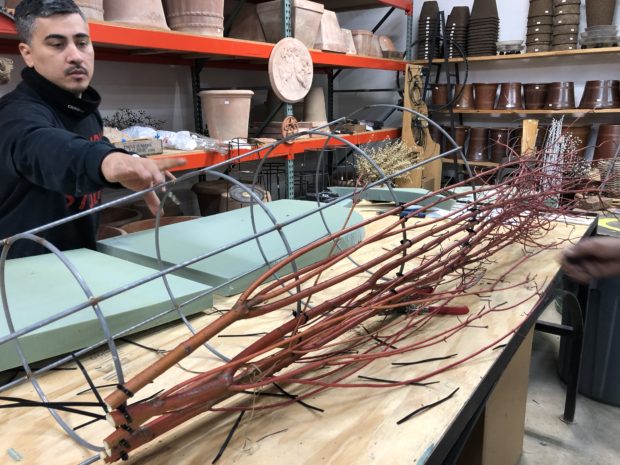 Any vertical element in a winter pot of ours needs to be constructed such that it shrugs off the gale force winds, snow, and ice prevalent in my zone. A centerpiece gone over in 6″ of snow will be very difficult to make right. Anyone who has tried to stake Annabelle hydrangeas in full bloom that have gone over in a heavy rain knows exactly how providing structure after the fact is very difficult to make work. The anticipation of trouble is not the most creative or interesting part of the job, but it does enable every gesture to come. Very large centerpieces required for very large pots need the the most in the way of thoughtful construction. Thoughtful does not imply difficult. Preparing just takes a little time. This centerpiece of red twig dogwood will be placed in the center of a pot 36″ in diameter, and 36″ tall. This calls for an armature, or metal frame that will provide support to a host of very tall branches. Every gardener knows how much living wood can weigh. Shrubs and trees have an extensive network of roots that keep them upright. Cut branches need another scheme that can provide strong support. A pot of this size will need a bold centerpiece of considerable volume and height in order to appear proportional to the size of the pot. There is no need for a centerpiece to be under scaled. An armature does not need to be custom welded. The armature for this centerpiece is a tomato cage, repurposed for the winter season.
Any vertical element in a winter pot of ours needs to be constructed such that it shrugs off the gale force winds, snow, and ice prevalent in my zone. A centerpiece gone over in 6″ of snow will be very difficult to make right. Anyone who has tried to stake Annabelle hydrangeas in full bloom that have gone over in a heavy rain knows exactly how providing structure after the fact is very difficult to make work. The anticipation of trouble is not the most creative or interesting part of the job, but it does enable every gesture to come. Very large centerpieces required for very large pots need the the most in the way of thoughtful construction. Thoughtful does not imply difficult. Preparing just takes a little time. This centerpiece of red twig dogwood will be placed in the center of a pot 36″ in diameter, and 36″ tall. This calls for an armature, or metal frame that will provide support to a host of very tall branches. Every gardener knows how much living wood can weigh. Shrubs and trees have an extensive network of roots that keep them upright. Cut branches need another scheme that can provide strong support. A pot of this size will need a bold centerpiece of considerable volume and height in order to appear proportional to the size of the pot. There is no need for a centerpiece to be under scaled. An armature does not need to be custom welded. The armature for this centerpiece is a tomato cage, repurposed for the winter season.
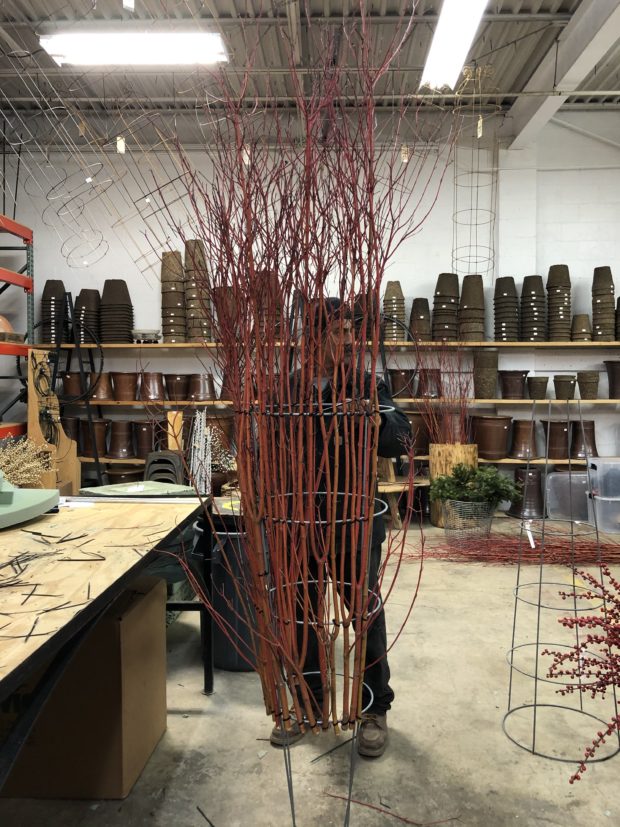 Each branch of this red twig, every bit of 8 feet tall, is zip tied with 8″ zip ties to every horizontal ring the tomato cage. This tight profile makes it easier to handle the centerpiece while it is under construction. We have spaced the branches as you see, as there are other elements yet to come.
Each branch of this red twig, every bit of 8 feet tall, is zip tied with 8″ zip ties to every horizontal ring the tomato cage. This tight profile makes it easier to handle the centerpiece while it is under construction. We have spaced the branches as you see, as there are other elements yet to come.
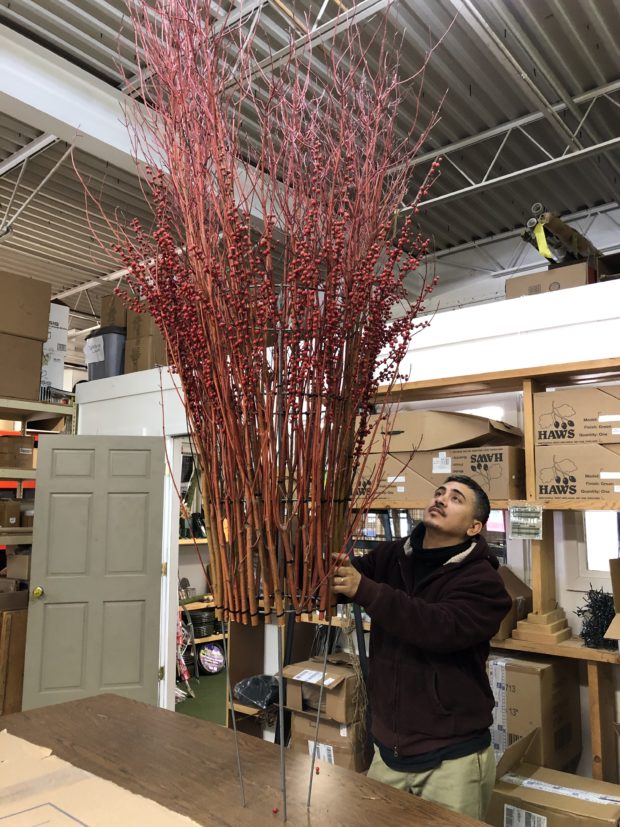 A round of faux red berries are zip tied in to the spaces between the red twig dogwood. The top layer of zip ties have been clipped off, so the dogwood branches are free to arch out more gracefully. We have left plenty of open space between as we plan to light the interior of the centerpiece.
A round of faux red berries are zip tied in to the spaces between the red twig dogwood. The top layer of zip ties have been clipped off, so the dogwood branches are free to arch out more gracefully. We have left plenty of open space between as we plan to light the interior of the centerpiece.
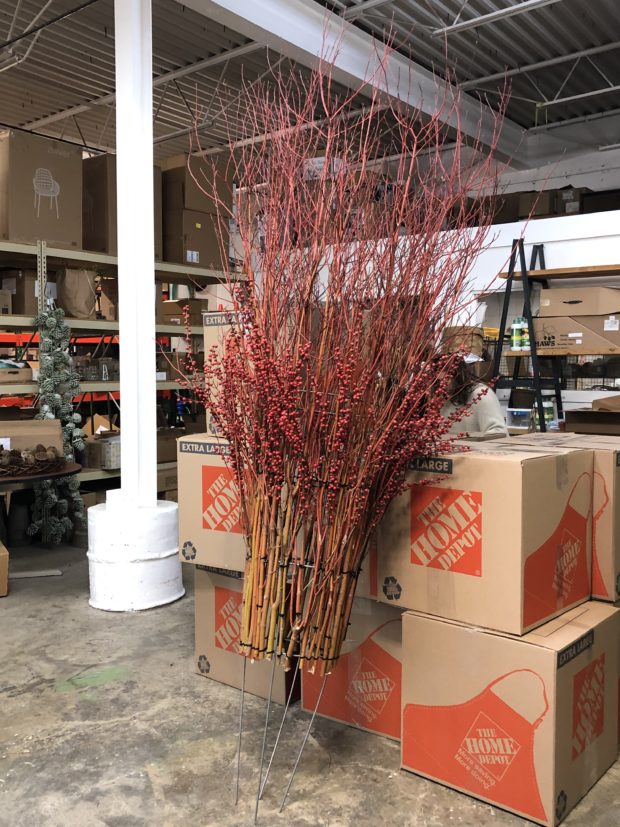 The long legs of the tomato cage will be pushed down as far as possible into the soil in the container. The bottoms of the twigs will also be below ground. Once that soil freezes, those steel rods and the bottoms of those branches will not move. But we will add 2′ long steel rebar in 4 or 5 spots that is secured to the tomato cage both above and below ground. This will provide that last and most serious measure of security.
The long legs of the tomato cage will be pushed down as far as possible into the soil in the container. The bottoms of the twigs will also be below ground. Once that soil freezes, those steel rods and the bottoms of those branches will not move. But we will add 2′ long steel rebar in 4 or 5 spots that is secured to the tomato cage both above and below ground. This will provide that last and most serious measure of security.
 Smaller centerpieces do not require but a single armature. All of the elements in these centerpieces have been arranged around a stout bamboo pole. It is essential that the centerpiece be zip tied in 2 spots, so the twigs do not shift. In the left centerpiece pictured above, the top of that pole is visible half way up the centerpiece. Once we center this in the pot, we will pound that bamboo stake down into the soil of the pot.
Smaller centerpieces do not require but a single armature. All of the elements in these centerpieces have been arranged around a stout bamboo pole. It is essential that the centerpiece be zip tied in 2 spots, so the twigs do not shift. In the left centerpiece pictured above, the top of that pole is visible half way up the centerpiece. Once we center this in the pot, we will pound that bamboo stake down into the soil of the pot.
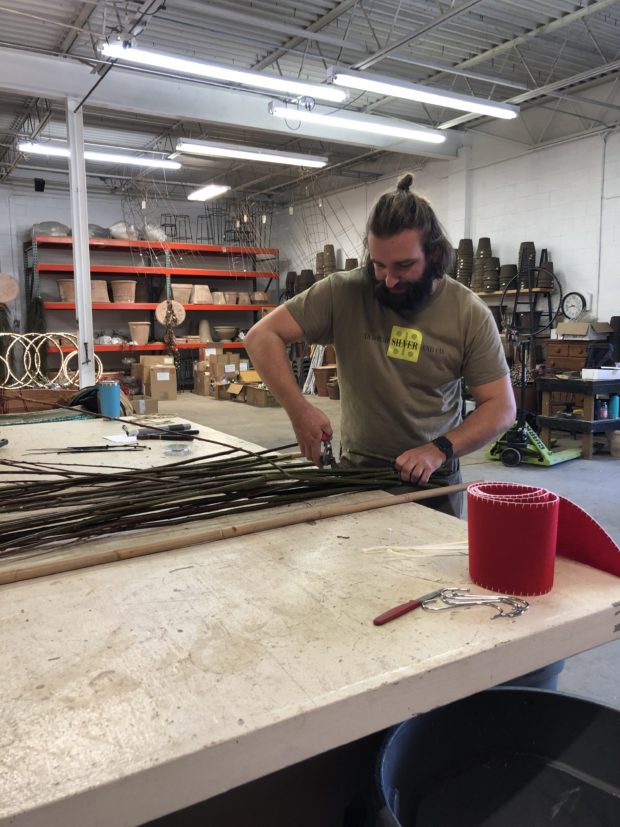 The bamboo stake is an essential element of our centerpiece construction. A 1″ pole requires a saw to make it shorter. That pole is rarely more than 3′ tall. It is light weight, and astonishingly strong. Every element we plan to add to a centerpiece gets arranged around this pole. Once that pole is driven down into the soil in a pot, it will provide all the ballast that centerpiece needs to stay upright.
The bamboo stake is an essential element of our centerpiece construction. A 1″ pole requires a saw to make it shorter. That pole is rarely more than 3′ tall. It is light weight, and astonishingly strong. Every element we plan to add to a centerpiece gets arranged around this pole. Once that pole is driven down into the soil in a pot, it will provide all the ballast that centerpiece needs to stay upright.
 A number of bunches of tall pussy willow, and a generous number of faux berry picks will be kept perfectly vertical all winter long – courtesy of the pole.
A number of bunches of tall pussy willow, and a generous number of faux berry picks will be kept perfectly vertical all winter long – courtesy of the pole.
 Constructing the the winter pots in our garage was an innovation that took quite a few years to perfect. I would suggest that a warm place is the best place to fabricate a centerpiece, and all else intended to go in a winter pot. The best work gets done when your fingers are warm.
Constructing the the winter pots in our garage was an innovation that took quite a few years to perfect. I would suggest that a warm place is the best place to fabricate a centerpiece, and all else intended to go in a winter pot. The best work gets done when your fingers are warm.
 These centerpieces have the bamboo pole pushed up so it is flush with the bottom of the twigs. But it is in there. A tree stand is a great way to keep a centerpiece upright while it is being worked on. Positioning the materials at a proper height to work on makes for a better quality outcome.
These centerpieces have the bamboo pole pushed up so it is flush with the bottom of the twigs. But it is in there. A tree stand is a great way to keep a centerpiece upright while it is being worked on. Positioning the materials at a proper height to work on makes for a better quality outcome.
 Once this centerpiece is truly centered in the pot, it will take one person to separate the branches so another person can drive the bamboo down into the soil with a hammer. A centerpiece of this size will need some steel rebar pounded down around it. A number of rotations of concrete wire tightened with pliers will bind the rebar to the centerpiece.
Once this centerpiece is truly centered in the pot, it will take one person to separate the branches so another person can drive the bamboo down into the soil with a hammer. A centerpiece of this size will need some steel rebar pounded down around it. A number of rotations of concrete wire tightened with pliers will bind the rebar to the centerpiece.
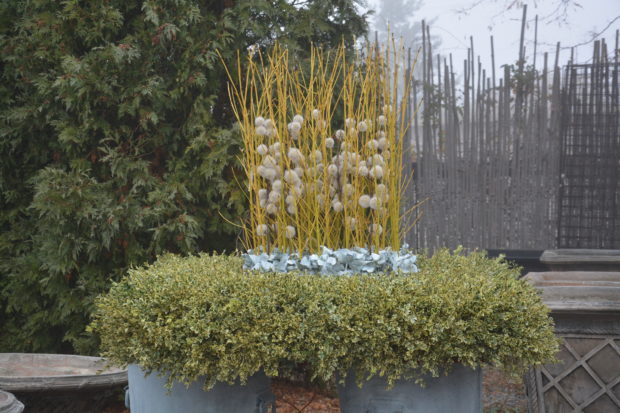 Sometimes we insert the twigs one stem at a time into the dry floral foam that secures the greens. As the weight of the branches is spread out, there is no need for an armature.
Sometimes we insert the twigs one stem at a time into the dry floral foam that secures the greens. As the weight of the branches is spread out, there is no need for an armature.
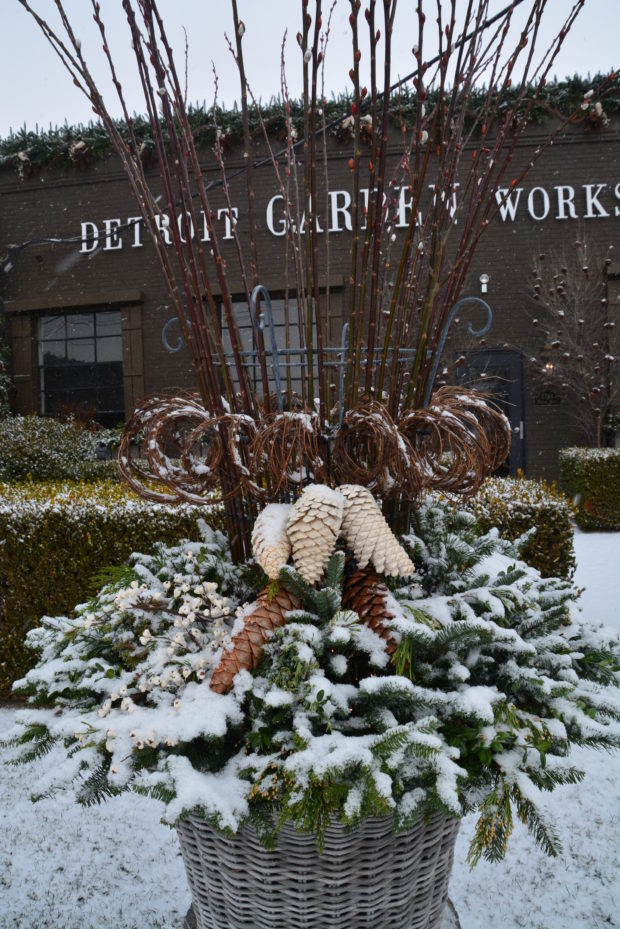 steel topiary form acting as an armature for tall pussy willow stems
steel topiary form acting as an armature for tall pussy willow stems
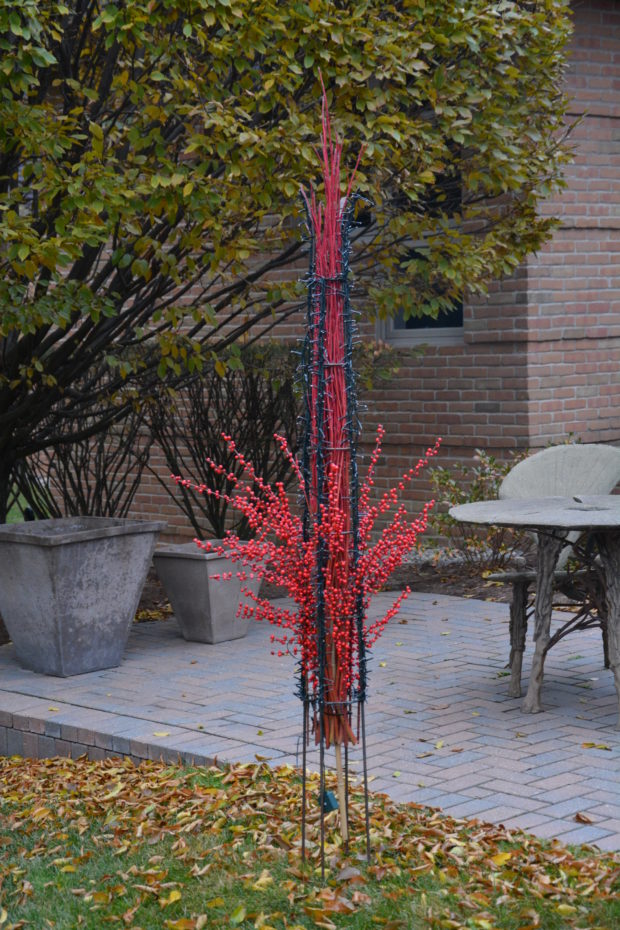 steel armature with twigs and berries inside
steel armature with twigs and berries inside
 a winter container without a centerpiece.
a winter container without a centerpiece.
 3 identical centerpieces installed side by side for a rectangular container
3 identical centerpieces installed side by side for a rectangular container
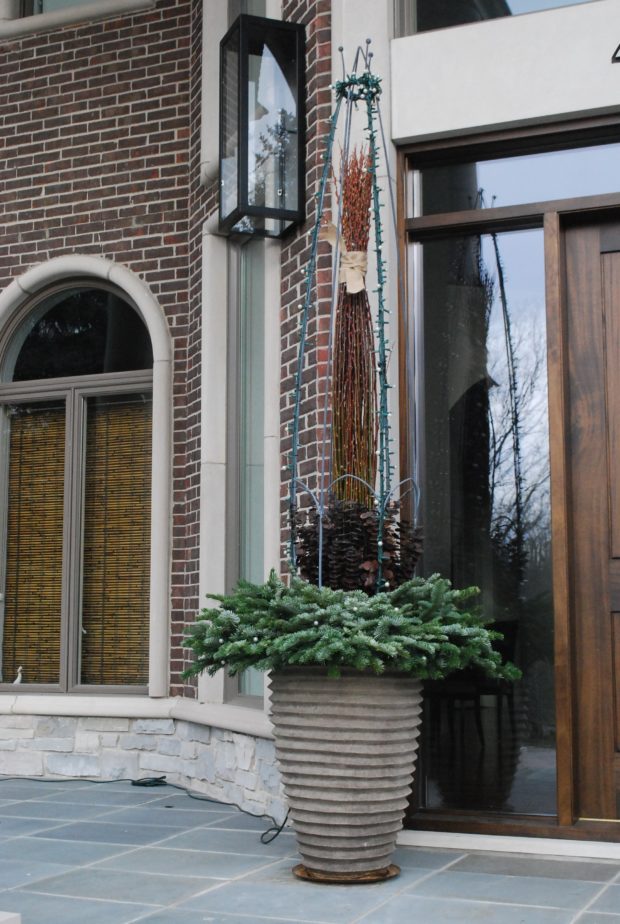 The steel topiary form in this winter pot is strictly ornamental, and not structural. It does provide a framework for lighting. The structural armature holding the centerpiece aloft is not visible once the container is finished.
The steel topiary form in this winter pot is strictly ornamental, and not structural. It does provide a framework for lighting. The structural armature holding the centerpiece aloft is not visible once the container is finished.
 Whatever will be the centerpiece of your winter pots, a method to construct and secure it is an essential element of the process.
Whatever will be the centerpiece of your winter pots, a method to construct and secure it is an essential element of the process.
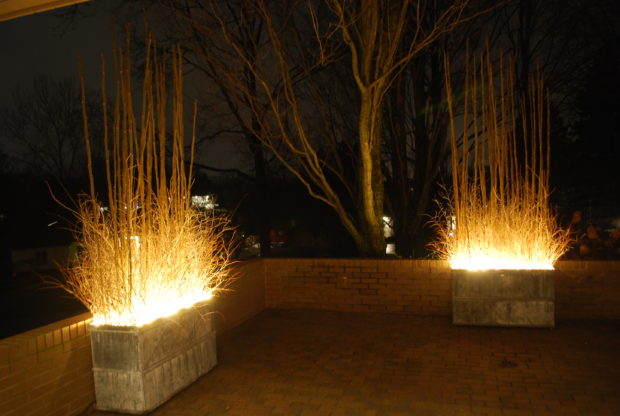

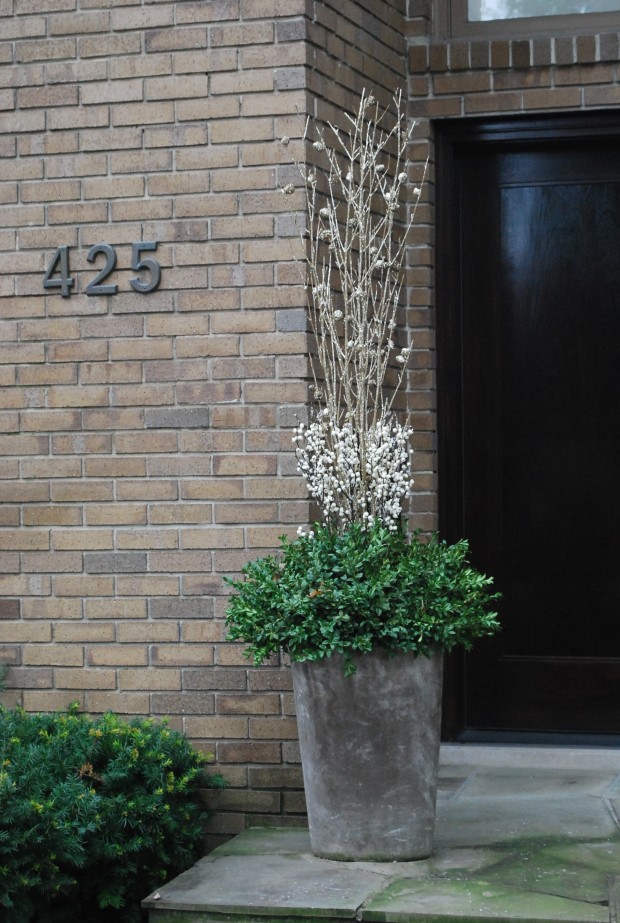
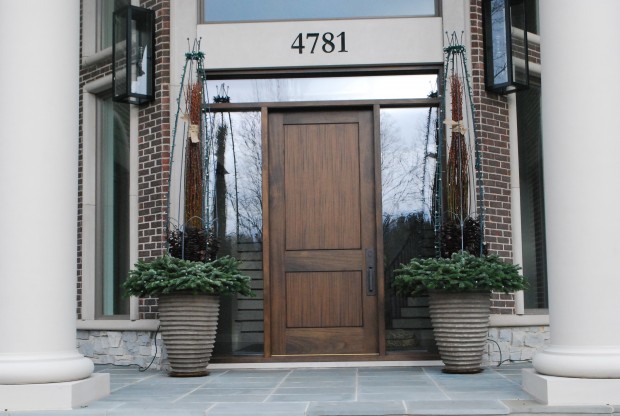


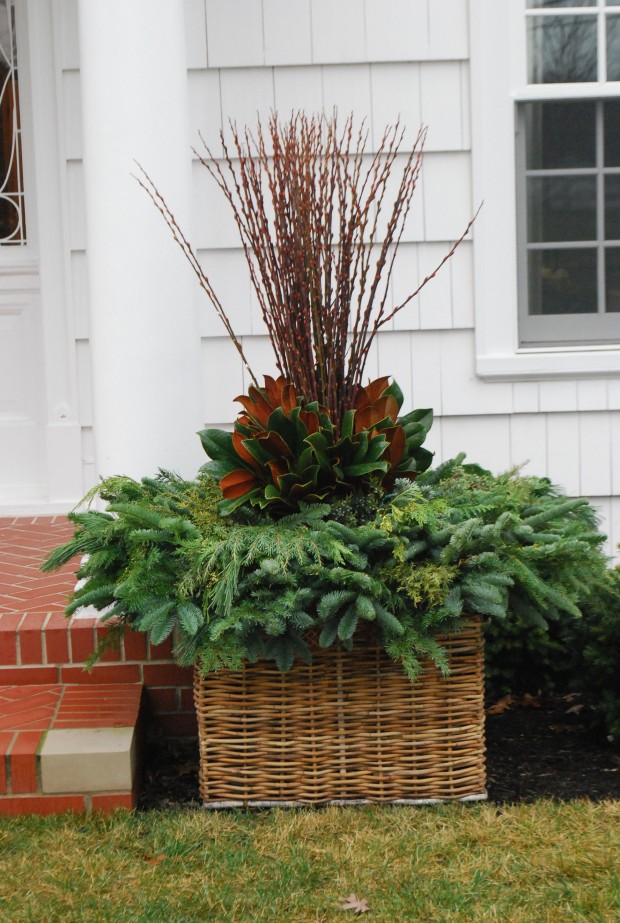
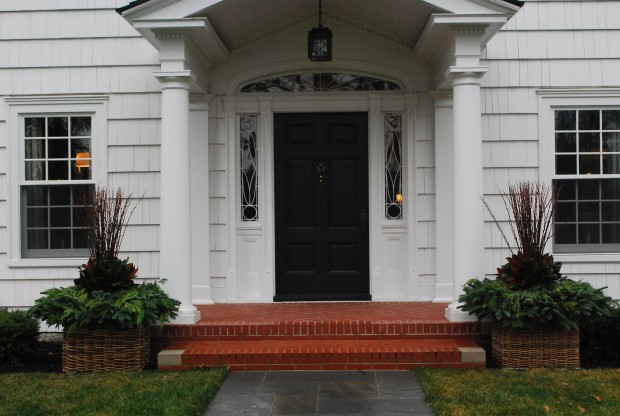
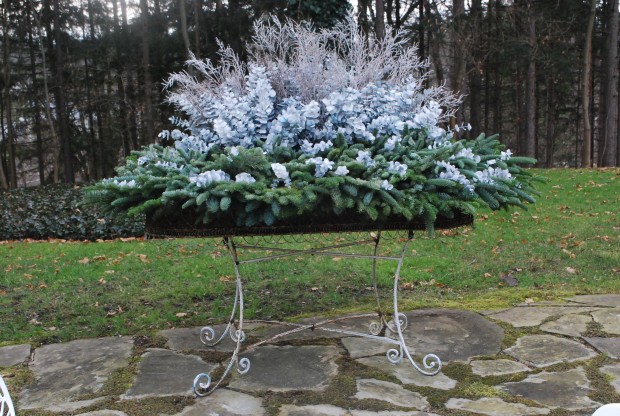

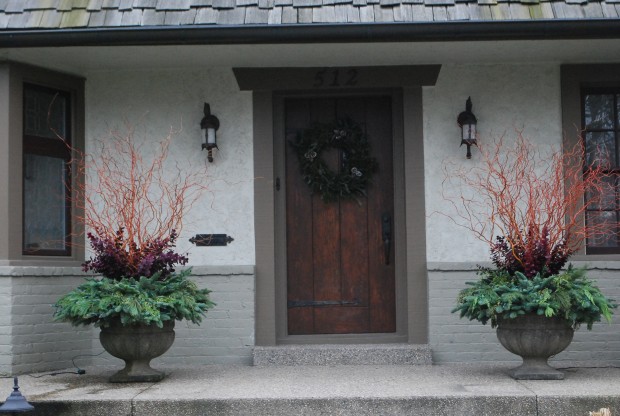
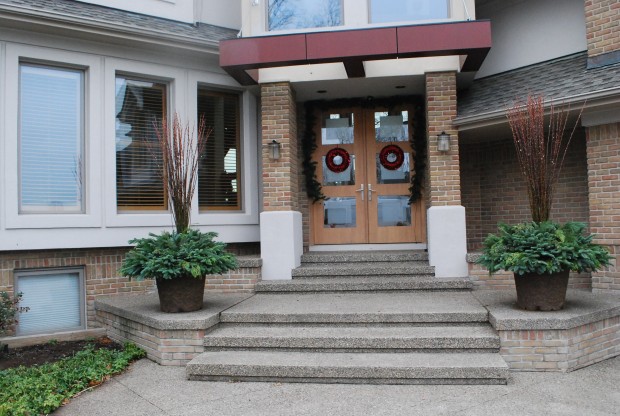
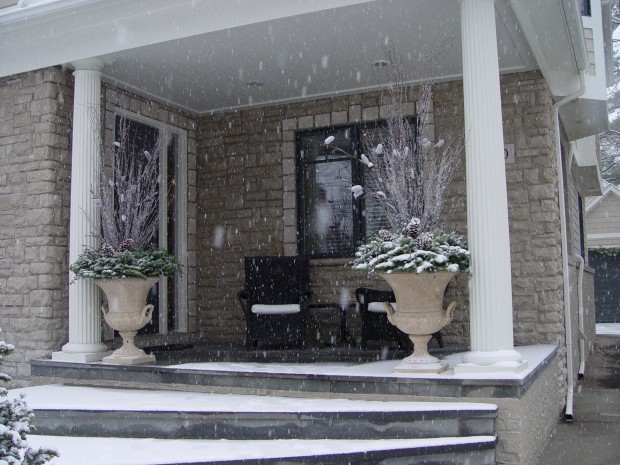
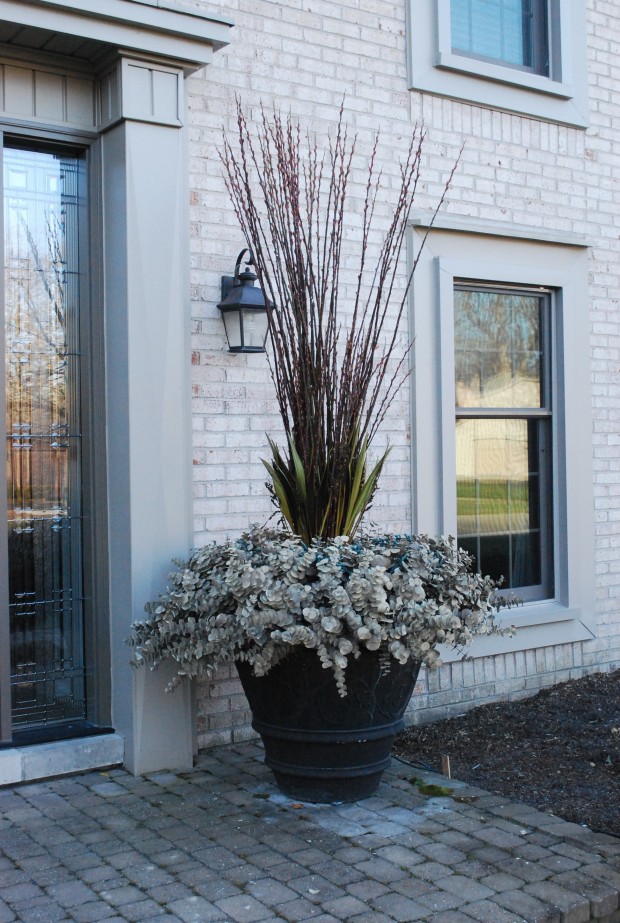
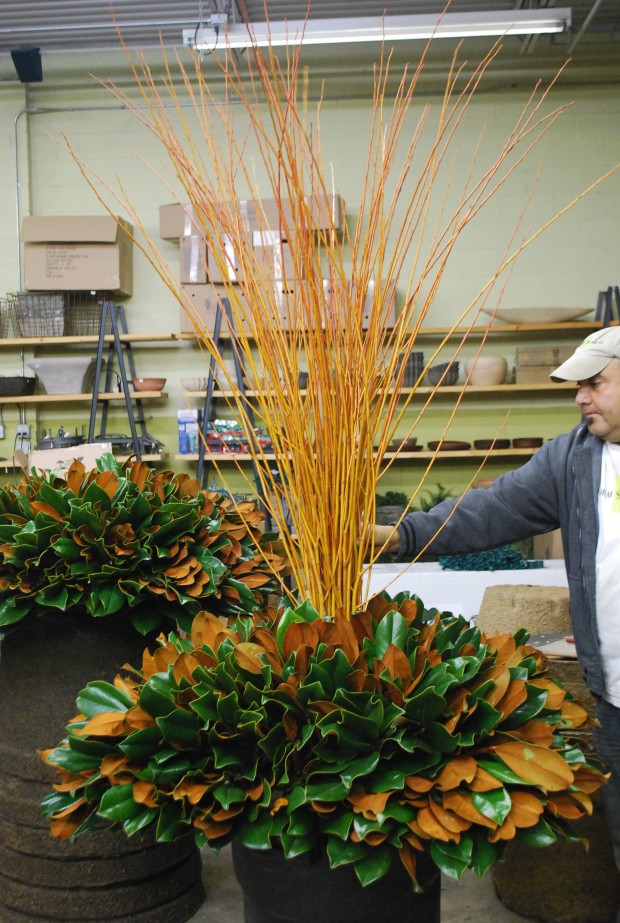
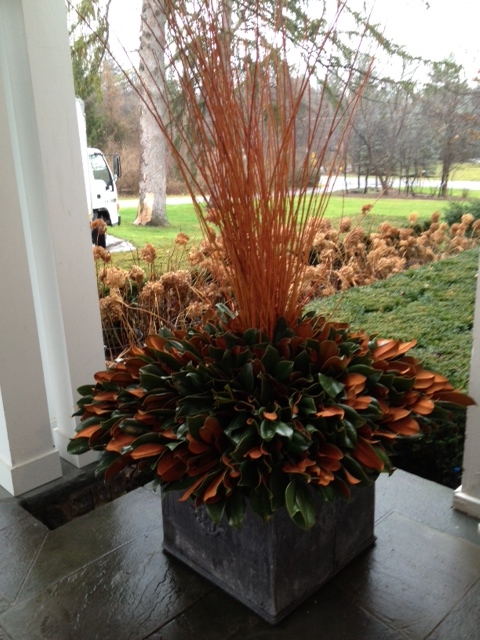
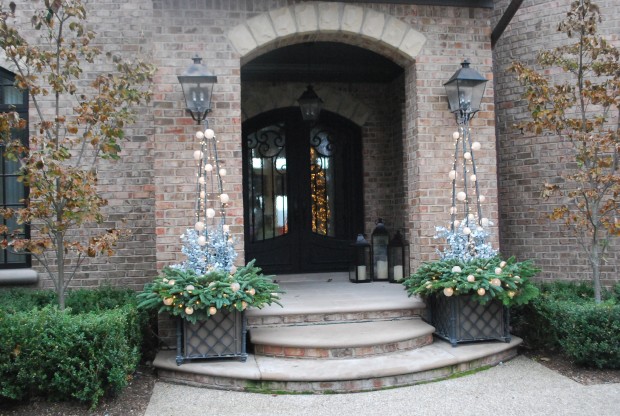
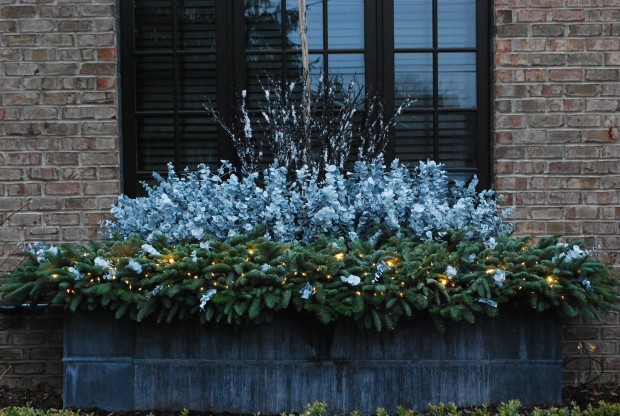
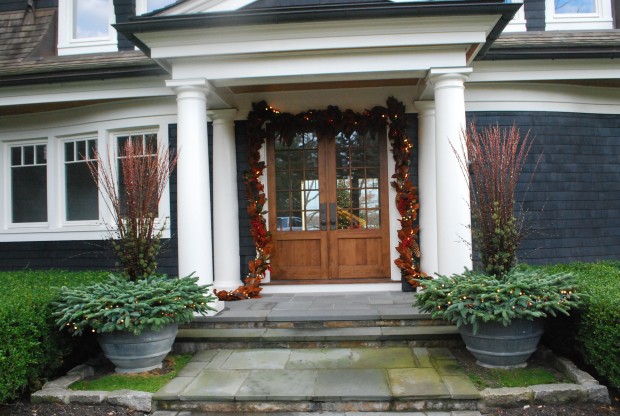
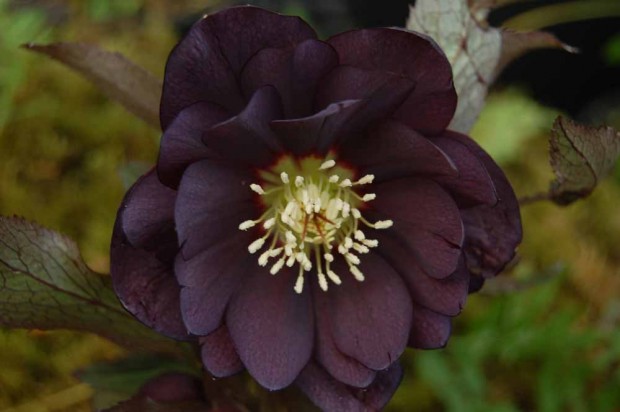



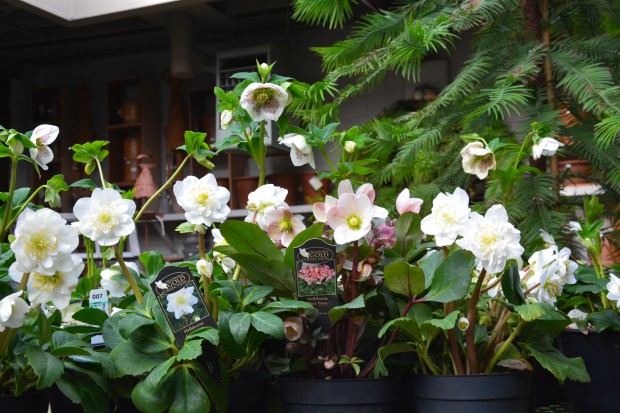
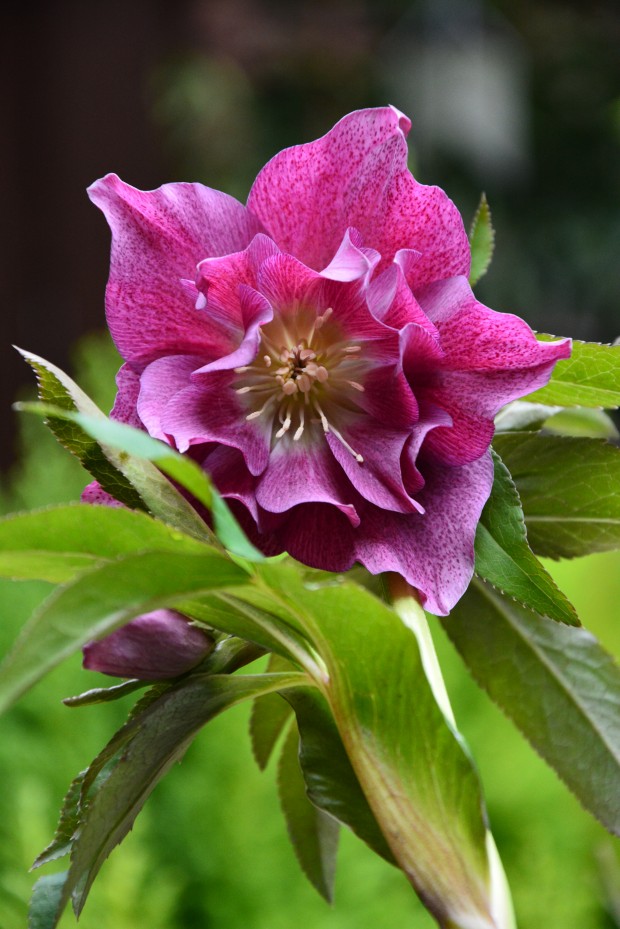
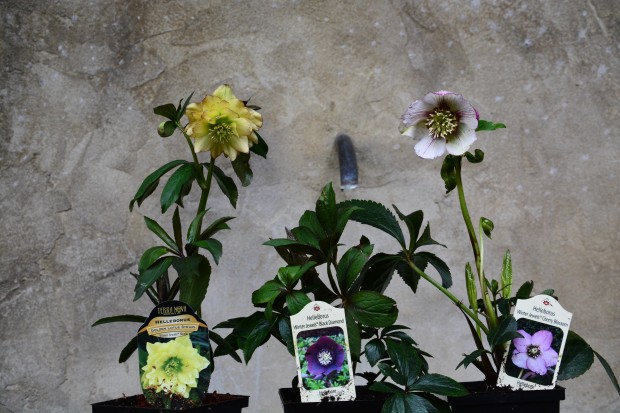
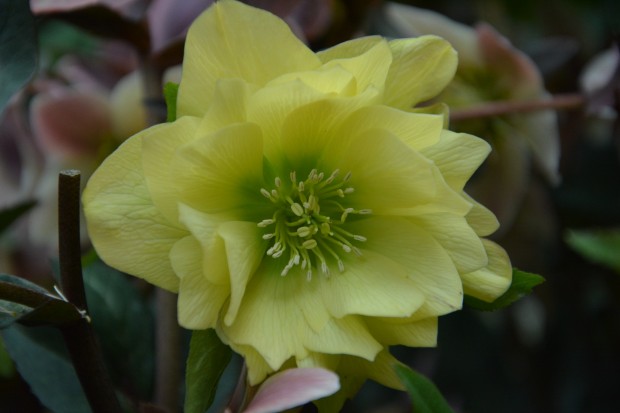

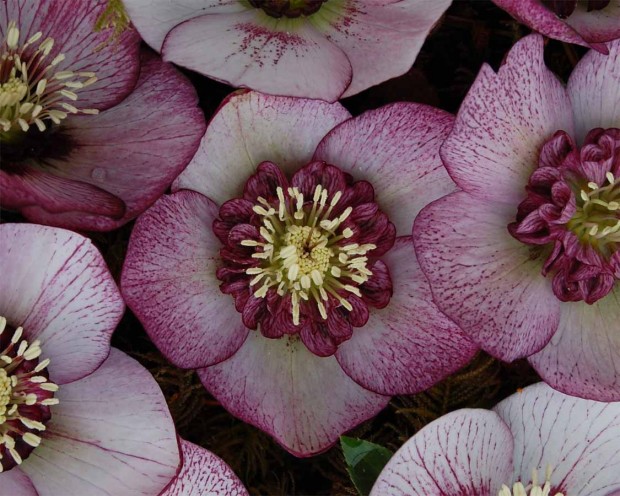




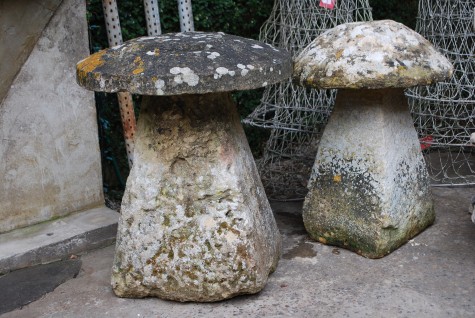
![gazebo_06[1]](https://deborahsilver.com/wp-content/uploads/2011/03/gazebo_061.jpg)

